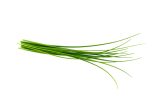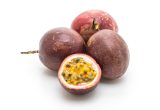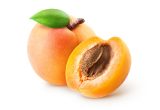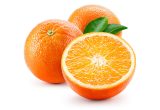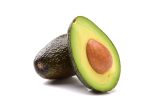Aspargus

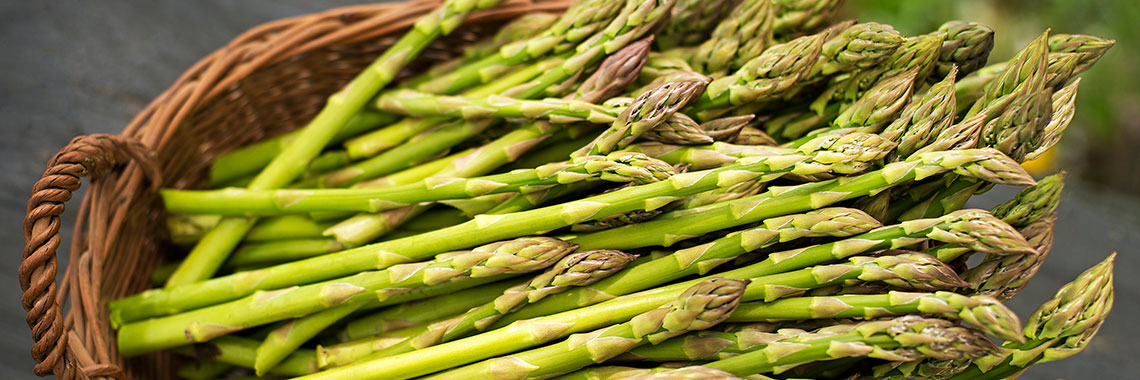
Description
- Asparagus belongs to the Liliaceae family, Asparagus genus, from the officinalis species.
- In France, it is primarily cultivated in the Val-de-Loire, the South-West and South-East area or the Alsace region.
- The Argenteuil asparagus, cultivated in the Île-de-France region, as well as the sands asparagus from the Landes region are the two most widely known varieties (Source: French Ministry of Agriculture, 2020)
PHYSICAL AND ORGANOLEPTIC PROPERTIES
- Asparagus is an underground or flowering bud also called a shoot. To turn green, it needs to be exposed to light (Source: Chambre d’agriculture des Bouches-du-Rhône, 2015).
- Green asparagus is less fibrous than the white one due to its faster growth cycle (Source: Chambre d’agriculture des Bouches-du-Rhône, 2015).
- After eating asparagus, most people notice their urine has a distinctive odour, more or less marked according to the individuals. Luckily, this goes away after a couple of hours (Facius, 2019). This is caused by an amino acid: asparagusic acid (Mitchell, 2014) which, during digestion, is converted into methyl-mercaptan.
COMPOSITION CHARACTERISTICS (excluding macronutrients, vitamins and minerals)
- Asparagus has significant levels of polyphenols and especially those of the flavonoid family (Fan, 2015; Symes, 2018; Zhang, 2019). The percentage of active components varies according to each part of the plant. Leaves have the highest flavonoid and saponin content (Guo, 2019).
- Moreover, the fibres present in asparagus (fructo-oligosaccharides and inulin) are classified as soluble fibres. They have a prebiotic action and are metabolised by gut microbiota bacteria into short-chain fatty acids, a key energy source for gut epithelial cells (Sabater-Molina, 2009).
RAW
The following values are approximate and depend on variety, season, ripeness, cultivation conditions, etc.
Raw green asparagus is low in energy* since it provides an average of 24.30 (calories) kcal per 100 g, or 102 kJ. On average, one asparagus weighs between 3.40 and 13.60 g, depending on the size, which corresponds to an energy intake that ranges from 0.83 to 3.30 kcal.
COMPOSITION TABLES
For each nutrient, these tables provide information on the content, minimum and maximum values, as well as the percentage of the Dietary Reference Values (DRVs) for 100 g net of raw green asparagus (except for the table on polyphenols, which is based on raw asparagus, for which the analysed variety is not mentioned).
* Regulation (EC) No 1924/2006 of the European Parliament and of the Council of 20 December 2006 on nutrition and health claims made for food products.
MACRONUTRIENTS
| Constituent (g) | Average content |
Min-Max per 100g |
DRV% |
|---|---|---|---|
| Water | 92,50 | 92,10 - 93 | - |
| Fibers | 2,15 | 1,50 - 2,80 | - |
| Carbohydrates | 2,03 | 1 - 3,10 | 0,78 |
| Sugars | 1,50 | 1 - 2 | 1,67 |
| Lipids | 0,27 | 0,20 - 0,30 | 0,39 |
| Saturated fat | 0,069 | - | 0,35 |
| Protein | 2,46 | 1,88 - 3,30 | 4,92 |
| Constituent (g) | Amount | Min-Max | DRV% |
|---|---|---|---|
| Water | Ciqual 2020 | - | - |
| Fibers | Ciqual 2020 | - | - |
| Carbohydrates | Ciqual 2020 | - | Règlement (UE) N°1169/2011 du parlement Européen et du conseil du 25 octobre 2011 |
| Sugars | Ciqual 2020 | - | Règlement (UE) N°1169/2011 du parlement Européen et du conseil du 25 octobre 2011 |
| Lipids | Ciqual 2020 | - | Règlement (UE) N°1169/2011 du parlement Européen et du conseil du 25 octobre 2011 % |
| Saturated fat | Ciqual 2020 | - | Règlement (UE) N°1169/2011 du parlement Européen et du conseil du 25 octobre 2011 |
| Protein | Ciqual 2020 | - | Règlement (UE) N°1169/2011 du parlement Européen et du conseil du 25 octobre 2011 |
Zoom on carbohydrates
- Raw green asparagus has a lower carbohydrate content (2.03 g per 100 g) than the average content in raw vegetables (4.45 g per 100 g).
- It is low in sugar* as it contains less than 5 g per 100 g, i.e., 1.50 g of sugar per 100 g.
Zoom on fibres
- The fibre content of raw green asparagus (2.15 g per 100 g) is lower than the average amount found in raw vegetables (2.43 g per 100 g).
Zoom on proteins
- The protein content of raw green asparagus (2.46 g per 100 g) is higher than the average amount found in raw vegetables (1.87 g per 100 g).
Zoom on lipids
- Raw green asparagus has a fat content (0.27 g per 100 g) lower than the average amount found in raw vegetables (0.56 g per 100 g).
It is fat-free* as it brings less than 0.5 g per 100 g.
*Regulation (EC) No 1924/2006 of the European Parliament and of the Council of 20 December 2006 on nutrition and health claims made on foods.
MINERALS AND TRACE ELEMENTS
| Constituent | Average content |
Min-Max per 100g |
DRV% |
|---|---|---|---|
| Calcium (mg) | 22,40 | 19,80 - 25,70 | 2,80 |
| Chloride (mg) | - | - | - |
| Copper (mg) | - | - | - |
| Iron (mg) | 1 | - | 7,14 |
| Iodine (µg) | - | - | - |
| Magnesium (mg) | 12,20 | - | 3,25 |
| Manganese (mg) | - | - | - |
| Phosphorus (mg) | 85,50 | 75,60 - 102 | 12,21 |
| Potassium (mg) | 267 | - | 13,35 |
| Selenium (µg) | - | - | - |
| Sodium (mg) | 3,85 | 3,70 - 4 | - |
| Zinc (mg) | - | - | - |
| Constituent | Amount | Min-Max | DRV% |
|---|---|---|---|
| Calcium (mg) | Ciqual 2020 | - | Règlement (UE) N°1169/2011 du parlement Européen et du conseil du 25 octobre 2011 |
| Chloride (mg) | - | - | Règlement (UE) N°1169/2011 du parlement Européen et du conseil du 25 octobre 2011 |
| Copper (mg) | Ciqual 2020 | - | Règlement (UE) N°1169/2011 du parlement Européen et du conseil du 25 octobre 2011 |
| Iron (mg) | Ciqual 2020 | - | Règlement (UE) N°1169/2011 du parlement Européen et du conseil du 25 octobre 2011 |
| Iodine (µg) | Ciqual 2020 | - | Règlement (UE) N°1169/2011 du parlement Européen et du conseil du 25 octobre 2011 |
| Magnesium (mg) | Ciqual 2020 | - | Règlement (UE) N°1169/2011 du parlement Européen et du conseil du 25 octobre 2011 |
| Manganese (mg) | Ciqual 2020 | - | Règlement (UE) N°1169/2011 du parlement Européen et du conseil du 25 octobre 2011 |
| Phosphorus (mg) | Ciqual 2020 | - | Règlement (UE) N°1169/2011 du parlement Européen et du conseil du 25 octobre 2011 |
| Potassium (mg) | Ciqual 2020 | - | Règlement (UE) N°1169/2011 du parlement Européen et du conseil du 25 octobre 2011 |
| Selenium (µg) | Ciqual 2020 | - | Règlement (UE) N°1169/2011 du parlement Européen et du conseil du 25 octobre 2011 |
| Sodium (mg) | Ciqual 2020 | - | - |
| Zinc (mg) | Ciqual 2020 | - | Règlement (UE) N°1169/2011 du parlement Européen et du conseil du 25 octobre 2011 |
Zoom on minerals and trace elements
- Raw green asparagus contains a significant amount of potassium and phosphorus. In fact, it provides the equivalent of:
- 13.35 % of DRVs for potassium, i.e. 267 mg for 100 g;
- 12.21 % of DRVs for phosphorus, i.e. 85.50 mg for 100 g.
- The other minerals and trace elements are present in lower quantities (less than 8% of DRVs).
VITAMINS
| Constituent | Average content |
Min-Max per 100g |
DRV% |
|---|---|---|---|
| Provitamin A Beta-carotene (µg) | - | - | - |
| Vitamin A equivalent (µg) | - | - | - |
| Vitamin B1 (mg) | - | - | - |
| Vitamin B2 (mg) | - | - | - |
| Vitamin B3 (mg) | - | - | - |
| Vitamin B5 (mg) | - | - | - |
| Vitamin B6 (mg) | 0,15 | 0,099 - 9,21 | 10,71 |
| Vitamin B9 (µg) | 150 | - | 75 |
| Vitamin C (mg) | 15,50 | 5 - 21 | 19,38 |
| Vitamin E (mg) | - | - | - |
| Vitamin K1 (µg) | - | - | - |
| Constituent | Amount | Min-Max | DRV% |
|---|---|---|---|
| Provitamin A Beta-carotene (µg) | Ciqual 2020 | - | - |
| Vitamin A equivalent (µg) | - | - | Règlement (UE) N°1169/2011 du parlement Européen et du conseil du 25 octobre 2011 |
| Vitamin B1 (mg) | Ciqual 2020 | - | Règlement (UE) N°1169/2011 du parlement Européen et du conseil du 25 octobre 2011 |
| Vitamin B2 (mg) | Ciqual 2020 | - | Règlement (UE) N°1169/2011 du parlement Européen et du conseil du 25 octobre 2011 |
| Vitamin B3 (mg) | Ciqual 2020 | - | Règlement (UE) N°1169/2011 du parlement Européen et du conseil du 25 octobre 2011 |
| Vitamin B5 (mg) | Ciqual 2020 | - | Règlement (UE) N°1169/2011 du parlement Européen et du conseil du 25 octobre 2011 |
| Vitamin B6 (mg) | Ciqual 2020 | - | Règlement (UE) N°1169/2011 du parlement Européen et du conseil du 25 octobre 2011 |
| Vitamin B9 (µg) | Ciqual 2020 | - | Règlement (UE) N°1169/2011 du parlement Européen et du conseil du 25 octobre 2011 |
| Vitamin C (mg) | Ciqual 2020 | - | Règlement (UE) N°1169/2011 du parlement Européen et du conseil du 25 octobre 2011 |
| Vitamin E (mg) | Ciqual 2020 | - | Règlement (UE) N°1169/2011 du parlement Européen, et du conseil du 25 octobre 2011 |
| Vitamin K1 (µg) | Ciqual 2020 | - | Règlement (UE) N°1169/2011 du parlement Européen, et du conseil du 25 octobre 2011 |
Zoom on vitamins
- Raw green asparagus is high in vitamin B9, as it covers 75% of DRVs for vitamin B9, i.e. 150 µg per 100 g. According to the Ciqual 2020 table, it is on the top list of vegetables for vitamin B9 content, after raw spinach and broccoli, (either green or white asparagus).
- Raw green asparagus is also a source of vitamin C, supplying the equivalent of 19.38% of DRVs for vitamin C, or 15.50 mg per 100 g.
- Vitamin B6 is also present in significant quantities, representing 10.71% of DRVs, or 0.15 mg per 100 g.
POLYPHENOLS
| Constituent (mg) | Average content |
Min-Max per 100mg |
|---|---|---|
| Flavonoids (mg) | 23,19 | 0 - 28,65 |
| of which Flavonols (mg) | 23,19 | 0 - 28,65 |
| Total polyphenols | 23,19 | 0 - 28,65 |
| Constituent (mg) | Amount | Min-Max |
|---|---|---|
| Flavonoids | Phénol-Explorer version 3.6 Méthode utilisée : Chromatographie | - |
| of which Flavonols | Phénol-Explorer version 3.6 Méthode utilisée : Chromatographie | - |
| Total polyphenols | Phénol-Explorer version 3.6 Méthode utilisée : Chromatographie | - |
Zoom on polyphenols (analysed asparagus varieties not mentioned)
- Polyphenols are antioxidant substances.
- Raw asparagus has a significant content of total polyphenols based on a chromatography study. They are essentially flavonols, from the flavonoid family.
BOILED
The following values are approximate and depend on variety, season, ripeness, cultivation conditions, etc.
Boiled green asparagus is low in energy* since it provides an average of 26.60 (calories) kcal per 100 g, or 112 kJ. On average, one asparagus weighs between 3.40 and 13.60 g, depending on the size, which corresponds to an energy intake that ranges from 0.90 to 3.62 kcal.
COMPOSITION TABLES
For each nutrient, these tables provide information on the content, minimum and maximum values, as well as the percentage of the Dietary Reference Values (DRVs) for 100 g net of boiled green asparagus (except for the table on polyphenols, which is based on boiled asparagus, for which the analysed variety is not mentioned).
* Regulation (EC) No 1924/2006 of the European Parliament and of the Council of 20 December 2006 on nutrition and health claims made on food products.
MACRONUTRIENTS
Constituent
(g)
Average content
Min-Max
per 100g
DRV%
Water
92,70
-
-
Fibers
2,20
-
-
Carbohydrates
1,73
0 - NC
0,67
Sugars
1,30
-
1,44
Lipids
0,30
-
0,43
Saturated fat
0,07
-
0,35
Protein
2,69
-
5,38
Constituent
(g)
Amount
Min-Max
DRV%
Water
Ciqual 2020 (valeur issue des analyses Ciqual-Aprifel 2018)
-
-
Fibers
Ciqual 2020 (valeur issue des analyses Ciqual-Aprifel 2018)
-
-
Carbohydrates
Ciqual 2020
-
Règlement (UE) N°1169/2011 du parlement Européen et du conseil du 25 octobre 2011
Sugars
Ciqual 2020 (valeur issue des analyses Ciqual-Aprifel 2018)
-
Règlement (UE) N°1169/2011 du parlement Européen et du conseil du 25 octobre 2011
Lipids
Ciqual 2020 (valeur issue des analyses Ciqual-Aprifel 2018)
-
Règlement (UE) N°1169/2011 du parlement Européen et du conseil du 25 octobre 2011
Saturated fat
Ciqual 2020 (valeur issue des analyses Ciqual-Aprifel 2018)
-
Règlement (UE) N°1169/2011 du parlement Européen et du conseil du 25 octobre 2011
Protein
Ciqual 2020 (valeur issue des analyses Ciqual-Aprifel 2018)
-
-
Zoom on carbohydrates
- Boiled green asparagus has a lower carbohydrate content (1.73 g per 100 g) than the average content in cooked vegetables (4.85 g per 100 g).
- Its carbohydrates are mainly fructose (0.80 g per 100 g), glucose (0.30 g per 100 g) and sucrose (0.2 g per 10 g).
- It is low in sugar* as it contains less than 5 g per 100 g.
Zoom on fibres
- Its fibre content (2.20 g per 100 g) is lower than the average content found in cooked vegetables (2.89 g per 100 g).
Zoom on proteins
- The protein content of boiled green asparagus (2.69 g per 100 g) is higher than the average content of cooked vegetables (2 g per 100 g).
Zoom on lipids
- Its fat content (0.30 g per 100 g) is lower than the average content found in cooked vegetables (0.53 g per 100 g).
- It is fat-free* as it brings less than 0.5 g per 100 g.
*Regulation (EC) No 1924/2006 of the European Parliament and of the Council of 20 December 2006 on nutrition and health claims made on foods.
MINERALS AND TRACE ELEMENTS
| Constituent | Average content |
Min-Max per 100g |
DRV% |
|---|---|---|---|
| Calcium (mg) | 21 | - | 2,63 |
| Chloride (mg) | - | - | - |
| Copper (mg) | 0,11 | - | 11 |
| Iron (mg) | 0,64 | - | 4,57 |
| Iodine (µg) | < 20 | - | - |
| Magnesium (mg) | 10 | - | 2,67 |
| Manganese (mg) | 0,13 | - | 6,50 |
| Phosphorus (mg) | 49 | - | 7 |
| Potassium (mg) | 220 | - | 11 |
| Selenium (µg) | < 20 | - | - |
| Sodium (mg) | < 5 | - | - |
| Zinc (mg) | 0,49 | - | 4,90 |
| Constituent | Amount | Min-Max | DRV% |
|---|---|---|---|
| Calcium (mg) | Ciqual 2020 (valeur issue des analyses Ciqual-Aprifel 2018) | - | Règlement (UE) N°1169/2011 du parlement Européen et du conseil du 25 octobre 2011 |
| Chloride (mg) | Ciqual 2020 (valeur issue des analyses Ciqual-Aprifel 2018) | - | Règlement (UE) N°1169/2011 du parlement Européen et du conseil du 25 octobre 2011 |
| Copper (mg) | Ciqual 2020 (valeur issue des analyses Ciqual-Aprifel 2018) | - | Règlement (UE) N°1169/2011 du parlement Européen et du conseil du 25 octobre 2011 |
| Iron (mg) | Ciqual 2020 (valeur issue des analyses Ciqual-Aprifel 2018) | - | Règlement (UE) N°1169/2011 du parlement Européen et du conseil du 25 octobre 2011 |
| Iodine (µg) | Ciqual 2020 (valeur issue des analyses Ciqual-Aprifel 2018) | - | Règlement (UE) N°1169/2011 du parlement Européen et du conseil du 25 octobre 2011 |
| Magnesium (mg) | Ciqual 2020 (valeur issue des analyses Ciqual-Aprifel 2018) | - | Règlement (UE) N°1169/2011 du parlement Européen et du conseil du 25 octobre 2011 |
| Manganese (mg) | Ciqual 2020 (valeur issue des analyses Ciqual-Aprifel 2018) | - | Règlement (UE) N°1169/2011 du parlement Européen et du conseil du 25 octobre 2011 |
| Phosphorus (mg) | Ciqual 2020 (valeur issue des analyses Ciqual-Aprifel 2018) | - | Règlement (UE) N°1169/2011 du parlement Européen et du conseil du 25 octobre 2011 |
| Potassium (mg) | Ciqual 2020 (valeur issue des analyses Ciqual-Aprifel 2018) | - | Règlement (UE) N°1169/2011 du parlement Européen et du conseil du 25 octobre 2011 |
| Selenium (µg) | Ciqual 2020 (valeur issue des analyses Ciqual-Aprifel 2018) | - | Règlement (UE) N°1169/2011 du parlement Européen et du conseil du 25 octobre 2011 |
| Sodium (mg) | Ciqual 2020 (valeur issue des analyses Ciqual-Aprifel 2018) | - | - |
| Zinc (mg) | Ciqual 2020 (valeur issue des analyses Ciqual-Aprifel 2018) | - | Règlement (UE) N°1169/2011 du parlement Européen et du conseil du 25 octobre 2011 |
Zoom on minerals and trace elements
- Boiled green asparagus contains a significant amount of copper and potassium. In fact, it provides the equivalent of:
- 11 % of DRVs for copper, i.e. 0.11 mg for 100 g;
- 11 % of DRVs for potassium, i.e. 220 mg for 100 g.
- The other minerals and trace elements are present in lower quantities (less than 8% of DRVs).
VITAMINS
| Constituent | Average content |
Min-Max per 100g |
DRV% |
|---|---|---|---|
| Provitamin A Beta-carotene (µg) | 438 | - | - |
| Vitamin A equivalent (µg) | 73 | - | 9,13 |
| Vitamin B1 (mg) | 0,067 | - | 6,09 |
| Vitamin B2 (mg) | 0,056 | - | 4 |
| Vitamin B3 (mg) | 0,70 | - | 4,38 |
| Vitamin B5 (mg) | 0,24 | - | 4 |
| Vitamin B6 (mg) | 0,046 | - | 3,29 |
| Vitamin B9 (µg) | 69,9 | - | 34,95 |
| Vitamin C (mg) | 4,73 | - | 5,91 |
| Vitamin E (mg) | 1,50 | - | 12,50 |
| Vitamin K1 (µg) | 12,50 | - | 16,67 |
| Constituent | Amount | Min-Max | DRV% |
|---|---|---|---|
| Provitamin A Beta-carotene (µg) | Ciqual 2020 (valeur issue des analyses Ciqual-Aprifel 2018) | - | - |
| Vitamin A equivalent (µg) | Calcul à partir des données Ciqual 2020* | - | Règlement (UE) N°1169/2011 du parlement Européen et du conseil du 25 octobre 2011 |
| Vitamin B1 (mg) | Ciqual 2020 (valeur issue des analyses Ciqual-Aprifel 2018) | - | Règlement (UE) N°1169/2011 du parlement Européen et du conseil du 25 octobre 2011 |
| Vitamin B2 (mg) | Ciqual 2020 (valeur issue des analyses Ciqual-Aprifel 2018) | - | Règlement (UE) N°1169/2011 du parlement Européen et du conseil du 25 octobre 2011 |
| Vitamin B3 (mg) | Ciqual 2020 (valeur issue des analyses Ciqual-Aprifel 2018) | - | Règlement (UE) N°1169/2011 du parlement Européen et du conseil du 25 octobre 2011 |
| Vitamin B5 (mg) | Ciqual 2020 (valeur issue des analyses Ciqual-Aprifel 2018) | - | Règlement (UE) N°1169/2011 du parlement Européen et du conseil du 25 octobre 2011 |
| Vitamin B6 (mg) | Ciqual 2020 (valeur issue des analyses Ciqual-Aprifel 2018) | - | Règlement (UE) N°1169/2011 du parlement Européen et du conseil du 25 octobre 2011 |
| Vitamin B9 (µg) | Ciqual 2020 (valeur issue des analyses Ciqual-Aprifel 2018) | - | Règlement (UE) N°1169/2011 du parlement Européen et du conseil du 25 octobre 2011 |
| Vitamin C (mg) | Ciqual 2020 (valeur issue des analyses Ciqual-Aprifel 2018) | - | Règlement (UE) N°1169/2011 du parlement Européen et du conseil du 25 octobre 2011 |
| Vitamin E (mg) | Ciqual 2020 (valeur issue des analyses Ciqual-Aprifel 2018) | - | Règlement (UE) N°1169/2011 du parlement Européen et du conseil du 25 octobre 2011 |
| Vitamin K1 (µg) | Ciqual 2020 (valeur issue des analyses Ciqual-Aprifel 2018) | - | Règlement (UE) N°1169/2011 du parlement Européen et du conseil du 25 octobre 2011 |
Zoom on vitamins
- Boiled green asparagus is high in vitamin B9, as it covers 34.95% of DRVs for vitamin B9, i.e., 69.90 µg per 100 g.
- Boiled green asparagus is also a source of vitamin K1, supplying the equivalent of 16.67% of DRVs for vitamin K1, or 12.50 µg per 100 g.
- Vitamin E is also present in significant quantities, representing 12.50% of DRVs, or 1.50 mg per 100 g.
POLYPHENOLS
| Constituent (mg) | Average content |
Min-Max per 100mg |
|---|---|---|
| Flavonoids (mg) | 49,77 | 30,40 - 71,97 |
| of which Flavonols (mg) | 49,77 | 30,40 - 71,97 |
| Phenolic Acids (mg) | 0,015 | 0,01 - 0,03 |
| of which Hydroxycinnamic acids (mg) | 0,015 | 0,01 - 0,03 |
| Total polyphenols | 49,785 | 30,41 - 72 |
| Constituent (mg) | Amount | Min-Max |
|---|---|---|
| Flavonoids | Phénol-Explorer version 3.6 Méthode utilisée : Chromatographie après hydrolyse | - |
| of which Flavonols | Phénol-Explorer version 3.6 Méthode utilisée : Chromatographie après hydrolyse | - |
| Phenolic Acids | Phénol-Explorer version 3.6 Méthode utilisée : chromatographie après hydrolyse | - |
| of which Hydroxycinnamic acids | Phénol-Explorer version 3.6 Méthode utilisée : chromatographie après hydrolyse | - |
| Total polyphenols | Phénol-Explorer version 3.6 Méthode utilisée : chromatographie après hydrolyse | - |
Zoom on polyphenols (analysed asparagus varieties not mentioned)
- Polyphenols are antioxidant substances.
- Flavonols, from the flavonoid family, are the main phenolic component found in cooked asparagus (based on a chromatography study after hydrolysis).
- Asparagus has a significant content in total polyphenols.
Nutrition and health claims
According to the definitions of nutrition claims as presented in Regulation (EC) No. 1924/2006 on nutrition and health claims, and in view of the composition of raw green asparagus, it is possible to use the following claims:
NUTRITION CLAIMS OF GREEN ASPARAGUS (RAW)
- Low in energy (100 g of raw green asparagus provide less than 40 kcal)
- Low in sugar (100 g of raw green asparagus contain less than 5 g of sugars)
- Fat-free (100 g of raw green asparagus contain less than 0.5 g of fat)
- High in vitamin B9 (100 g of raw green asparagus provide more than 30% of DRVs)
- Source of vitamin C (100 g of raw green asparagus provide more than 15% of DRVs)
HEALTH CLAIMS (for a consumption of 100 g of raw green asparagus)
Folates or vitamin B9
- Folates contribute to:
- maternal tissue growth during pregnancy,
- normal amino acid synthesis,
- normal blood formation,
- normal homocysteine metabolism,
- normal psychological function,
- normal function of the immune system,
- reduction of tiredness and fatigue.
- Folates have a role in the process of cell division.
Vitamin C
- Vitamin C contributes to:
- normal function of the immune system during and after intense physical exercise,
- normal collagen formation for the normal function of blood vessels,
- normal collagen formation for the normal function of bones,
- normal collagen formation for the normal function of cartilage,
- normal collagen formation for the normal function of gums,
- normal collagen formation for the normal function of skin,
- normal collagen formation for the normal function of teeth,
- normal energy-yielding metabolism,,
- normal functioning of the nervous system,
- normal psychological function,
- normal function of the immune system,
- protection of cells from oxidative stress,
- reduction of tiredness and fatigue,
- regeneration of the reduced form of vitamin E.
- Vitamin C increases iron absorption.
Nutrition and health claims
According to the definitions of nutrition claims as presented in Regulation (EC) No. 1924/2006 on nutrition and health claims, and in view of the composition of boiled green asparagus, it is possible to use the following claims:
NUTRITION CLAIMS OF GREEN ASPARAGUS (BOILED)
- Low in energy (100 g of boiled green asparagus provide less than 40 kcal)
- Low in sugar (100 g of boiled green asparagus contain less than 5 g of sugars)
- Fat-free (100 g of boiled green asparagus contain less than 0.5 g of fat)
- High in vitamin B9 (100 g of boiled green asparagus provide more than 30% of DRVs)
- Source of vitamin K1 (100 g of boiled green asparagus provide more than 15% of DRVs)
HEALTH CLAIMS (for a consumption of 100 g of boiled green asparagus)
Folates or vitamin B9
- Folates contribute to:
- maternal tissue growth during pregnancy,
- normal amino acid synthesis,
- normal blood formation,
- normal homocysteine metabolism,
- normal psychological function,
- normal function of the immune system,
- reduction of tiredness and fatigue.
- Folates have a role in the process of cell division.
Vitamin K1
- Vitamin K1 contributes to:
- maintenance of normal bones,
- normal blood clotting.
References
- Agence nationale de sécurité sanitaire de l’alimentation, de l’environnement et du travail. Table de composition nutritionnelle des aliments Ciqual 2020. Consultée le 29/07/2020 depuis le site internet Ciqual https://ciqual.anses.fr/
- Agence nationale de sécurité sanitaire de l’alimentation, de l’environnement et du travail. Table de composition nutritionnelle des aliments Ciqual pour le calcul des apports nutritionnels CALNUT 2020. Consultée le 14/09/2020 depuis le site internet Ciqual https://ciqual.anses.fr/
- Chambre d’agriculture des Bouches-du-Rhône. Culture de l’asperge blanche ou verte. Avril 2015. 20p
- Facius A, Atkinson LA, Hanna K, Coombes MC, Lahu G, Wagner JA. What Can Be Learned From Crowdsourced Population Asparagus Urinary Odor Kinetics? CPT Pharmacometrics Syst Pharmacol. 2019;8(6):407-414.
- Fan R, Yuan F, Wang N, Gao Y, Huang Y. Extraction and analysis of antioxidant compounds from the residues of Asparagus officinalis L. J Food Sci Technol. 2015;52(5):2690-700.
- Guo Q, Wang N, Liu H, Li Z, Lu L, Wang C. The bioactive compounds and biological functions of Asparagus officinalis L. – A review. Journal of Functional Foods. In Press.
- Ministère de l’agriculture. Les asperges, un produit frais et de saison par excellence [en ligne]. [Consulté le 26/03/2021] disponible à l’adresse : https://agriculture.gouv.fr/les-asperges-un-produit-frais-et-de-saison-par-excellence
- Mitchell SC, Waring RH. Asparagusic acid. Phytochemistry. 2014;97:5-10.
- Neveu V, Perez-Jiménez J, Vos F, Crespy V, du Chaffaut L, Mennen L, Knox C, Eisner R, Cruz J, Wishart D, Scalbert A. (2010) Phenol-Explorer: an online comprehensive database on polyphenol contents in foods. Database, doi: 10.1093/database/bap024. Full text (free access)
- Règlement (CE) N° 1924/2006 du Parlement européen et du Conseil du 20 décembre 2006 concernant les allégations nutritionnelles et de santé portant sur les denrées alimentaires.
- Règlement (UE) N°432/2012 de la Commission du 16 mai 2012 établissant une liste des allégations de santé autorisées portant sur les denrées alimentaires, autres que celles faisant référence à la réduction du risque de maladie ainsi qu’au développement et à la santé infantiles.
- Règlement (UE) n°1169/2011 du Parlement européen et du Conseil du 25 octobre 2011 concernant l’information des consommateurs sur les denrées alimentaires, modifiant les règlements (CE) n°1924/2006 et (CE) n°1925/2006 du Parlement européen et de Conseil et abrogeant la directive 87/250/CEE de la Commission, la directive 90/496/CEE du Conseil, la directive 1999/10/CE de la Commission, la directive 200/13/CE du Parlement européen et du Conseil, les directives 2002/67/CE et 2008/5/CE de la Commission et le règlement (CE) n°608/2004 de la Commission.
- Sabater-Molina M, Larqué E, Torrella F, Zamora S. Dietary fructooligosaccharides and potential benefits on health. J Physiol Biochem. 2009;65(3):315-28.
- Symes A1, Shavandi A2, Zhang H3, Mohamed Ahmed IA4, Al-Juhaimi FY5, Bekhit AEA6. Antioxidant Activities and Caffeic Acid Content in New Zealand Asparagus (Asparagus officinalis) Roots Extracts. Antioxidants (Basel). 2018;7(4).
- Zhang H, Birch J, Pei J, Mohamed Ahmed IA, Yang H, Dias G, Abd El-Aty AM, Bekhit AE. Identification of Six Phytochemical Compounds from Asparagus officinalis L. Root Cultivars from New Zealand and China Using UAE-SPE-UPLC-MS/MS: Effects of Extracts on H₂O₂-Induced Oxidative Stress. Nutrients. 2019;11(1).




